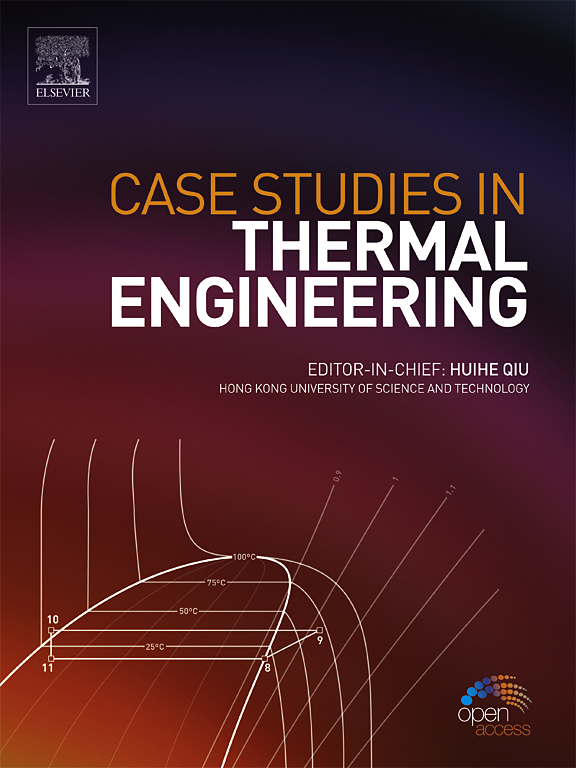An experimental study on the agitating efficiency and power consumption for viscoelastic-based nanofluids: Elasticity, impeller effects, and artificial neural network approach
IF 6.4
2区 工程技术
Q1 THERMODYNAMICS
引用次数: 0
Abstract
In industrial mixing applications, the power consumption and mixing time are employed widely for engineering equipment designs containing non-Newtonian, especially viscoelastic fluids. Though readings on nanofluids are growing, the attentions on nanofluids built on three ingredients elements of viscoelastic-based nanofluids (VBN) are insufficient. Subsequently, in previous study, multi-walled carbon nanotubes (MWCNT) were functionalized chemically with carboxyl groups (to prepare f-MWCNT) nanoparticles and characterized using X-ray diffraction, Fourier transforms infrared spectroscopy, dynamic light scattering, and transmission electron microscopy analyses. In this study, three constituents, viscoelastic-based fluid have been made by using (f1) a mixture of polyacrylamide, glycerol, and water as the base fluid and (f2) synthesized f-MWCNT as the nanoparticles. Further, the power consumption and mixing time of the VBN, i. e. f1+f2, with Rushton turbine disk (RTD), 45° pitched blade turbine (PBT), and hydrofoil (HF) impellers were measured in the transition region (10 < Re < 1800). The mixing times of the RTD, PBT, and HF impellers were measured for different VBN by the thermal response method resulting in minimum mixing time for the RTD. It was shown that mixing time increases with increasing of both nanoparticle and polyacrylamide (PAA) concentrations. Also, by increasing the both PAA and f-MWCNT mass fraction (high elasticity), the power number of the impellers rises and falls in low and high Reynolds numbers, respectively. In addition, artificial neural network (ANN) modelling with two hidden layers (4:15:12:1) was developed to predict the power consumption using impeller types, rotational speed, f-MWCNT, and PAA weight fraction. The correlation coefficient (R), and root mean square (RMSE) parameters of the test dataset are 0.99 and 0.0014, respectively which confirms the high accuracy of the presented ANN relationship.

求助全文
约1分钟内获得全文
求助全文
来源期刊

Case Studies in Thermal Engineering
Chemical Engineering-Fluid Flow and Transfer Processes
CiteScore
8.60
自引率
11.80%
发文量
812
审稿时长
76 days
期刊介绍:
Case Studies in Thermal Engineering provides a forum for the rapid publication of short, structured Case Studies in Thermal Engineering and related Short Communications. It provides an essential compendium of case studies for researchers and practitioners in the field of thermal engineering and others who are interested in aspects of thermal engineering cases that could affect other engineering processes. The journal not only publishes new and novel case studies, but also provides a forum for the publication of high quality descriptions of classic thermal engineering problems. The scope of the journal includes case studies of thermal engineering problems in components, devices and systems using existing experimental and numerical techniques in the areas of mechanical, aerospace, chemical, medical, thermal management for electronics, heat exchangers, regeneration, solar thermal energy, thermal storage, building energy conservation, and power generation. Case studies of thermal problems in other areas will also be considered.
 求助内容:
求助内容: 应助结果提醒方式:
应助结果提醒方式:


